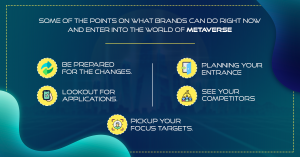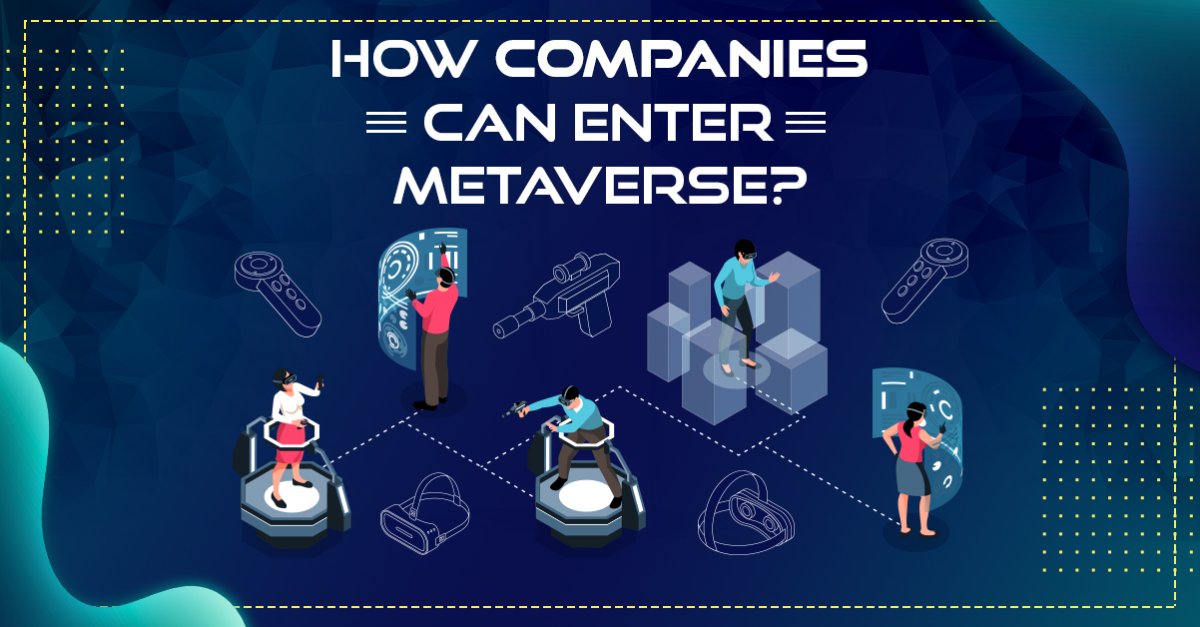Technology in today’s world is moving at a thunder lightning speed and one of the key changes tech is bringing up is Metaverse. The key idea of the metaverse is not complicated. Placing it in simple terms, metaverse includes any digital experience on the internet which is persistent, immersive, three-dimensional (3D), and virtual i.e. not happening in the physical or say real world. The experiences offer us the opportunity to play, work, connect or even buy. The metaverse refers more to the concept across these individual worlds and experiences and the acknowledgement that we are entering into a more substantive, immersive landscape than ever before.
The AR and VR Connect
Metaverse is affecting the future of companies. Additionally, with the two major trends happening now. First being virtual reality (VR) and the second being augmented reality (AR). This idea of virtual worlds has been in existence since the 1960s when Morton Heilig created his Sensorama machine which used stereoscopic 3D films, smell, sound, touch, and other sensory feedback to produce an immersive experience for viewers.
Throwing more lights here, Virtual reality or VR is a computer-generated simulation of a three-dimensional image or environment that can be interacted with in a seemingly real or physical way by a person using special electronic equipment such as a VR headset or any other similar devices. It has been used for many years in video games, but now the approach is being applied towards advancement in various fields like education, healthcare, military training and more.
Augmented Reality on the other hand, overlays digital information on the real world for people to view and interact with. The unique mixed reality merges virtual content with the real world to create an immersive experience. AR overlays digital information on the real world through one’s phone screen or through glasses with transparent lenses such as those from Google Glass or Microsoft HoloLens. This allows us to view digital images as if they were part of the physical existence.
How the landscape is getting shaped
Sighting some examples of Metaverse or software for Metaverse, a handful of businesses are already shaping the landscape with entertainment and gaming companies leading the way. Major console and PC gaming titles, such as Fortnite from Epic Games have normalized playing & socializing with people in the virtual settings. Various new gaming platforms such as Roblox allow people to create and play across immersive worlds created & often even monetized by the users. Another example here is of Decentraland, which is an entire 3D virtual world owned by its users, allowing them to create virtual gigantic structures from theme parks to galleries & then charge users to visit them, all being powered by Ethereum blockchain technology. Various other companies, like MetaVRse and Unity are known to create engines to power brand and gaming studios and accelerate development of AR and VR content creation.
This interactive virtual world is a computer-generated environment which can be explored and interacted with by a person. This world can be similar to the real world or it can be completely inverse. Companies and brands are aggressively capitalising on the opportunity and implementing virtual reality and augmented reality as a marketing tool.
Brands are getting louder
Gigantic brands such as Nike, Adidas, Mercedes Benz and more have already begun to create their own VR experiences for customers. But, one thing to note is that creating VR content is not easy. It requires highly specialized skill sets in animation, 3D modelling, sound design, video editing, etc., which are not easy to find. To make things executable for companies who want to enter into this space, there are tools available that will help to create VR experiences without any coding knowledge required.
Here are some of the points on what brands can do right now and enter into the world of Metaverse

1. Pickup your focus targets
The first thing to do is to identify how much your target audiences/customers are spending time in the metaverse and calibrate your speed of attack appropriately. Identify who are your target demographics, what are the behaviours which are trending with your current and prospective consumers right now, the time estimation of how fast to move into the metaverse and similar questions would help carve out a plan.
2. See your competitors
Another way of entering into this universe is to keep a close eye on your competition and see when your peer companies do some movements in the metaverse. Creating and curating concepts involving indecipherable concepts such as NFTs or block chain, researching and doing an acid test internally to understand the workability of the innovation, can surely help.
3. Lookout for applications
Metaverse not only gives you opportunities as a company to try new things but it also accelerates the purpose or the long-term goals such as sustainability, which is highly suited to many applications of the metaverse. We see every other CMO making a public commitment to sustainability-related ESGs, with the advantage of being measurable. What one can pilot in the metaverse which allows to test more sustainable approaches to serve your customers is a low hanging fruit which can be explored.
4. Planning your entrance
Start by asking your agency team to begin formulating a point of view on how your brand should show up in the metaverse and the timelines when it might make sense. Holding companies and independent agencies are both keenly watching mass media behaviours and the dynamically emerging trends, hence it’s a great opportunity to ask them what they are seeing across their client portfolio and initiate from the open loops.
5. Be Prepared for the changes
If you are already in a development place, be prepared for the fact that all new spaces will have its risks and rewards and would need to be managed accordingly, knowing that it can be super-unpredictable and lacking in standards. One positive thing is that the recent pandemic made us all way more agile than ever before. Just to state the obvious, there will in-fact be experiments that fail. Second Life offered the promise of metaverse years ago and it did not take hold, but the risk for the brands who participated in the league was not significant or long term. So, if this is the right time, it’s important to consider how to be there.
6. Leadership has its say
Most importantly, people in the brand marketing or leadership roles should begin thinking about how to unleash their creativity and the storytelling power. If the creative palette expands dimensions in the metaverse, we should be excited to create experiences at any point in the customer journey, starting right from acquisition to engagement, to transaction, to customer support and more which have the complete potential to be both spectacular and stickier than before.
Metaverse development is the next step in the evolution of virtual reality. It is a persistent, shared, 3D virtual space where people can interact with others and share experiences. Companies for a better survival, would need to invest in VR headsets and AR glasses for their employees. They would also need to invest in VR-ready computers and laptops to be used at work. This investment is merely the beginning of what companies will need to do if they want to enter the world of metaverse. The future is coming and it is closer than we think. Virtual reality, augmented reality, and mixed reality are the new technologies that are ready to take up the world and will soon be part of our routine lives.
Chapter 247 simplifies ways to enter Metaverse
Still unsure of where to start? We got you! At Chapter247, we provide you with all services essential to step your organisation into the metaverse and become a part of the fast growing technology. With our advanced team of technicians, coders, developers and content creators, you can be rest assured of the results and quality. So what are you waiting for? Get in touch with us and give your organisation the much demanded technical boost.









